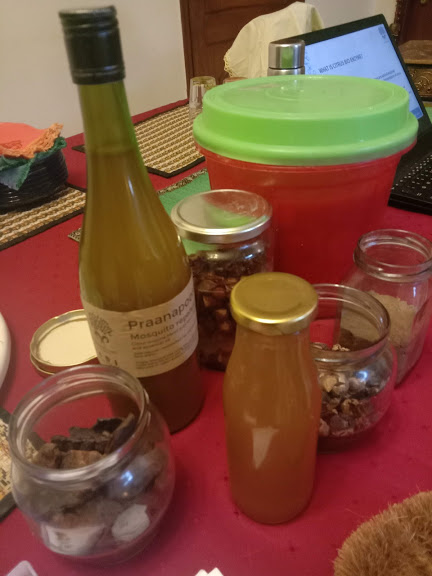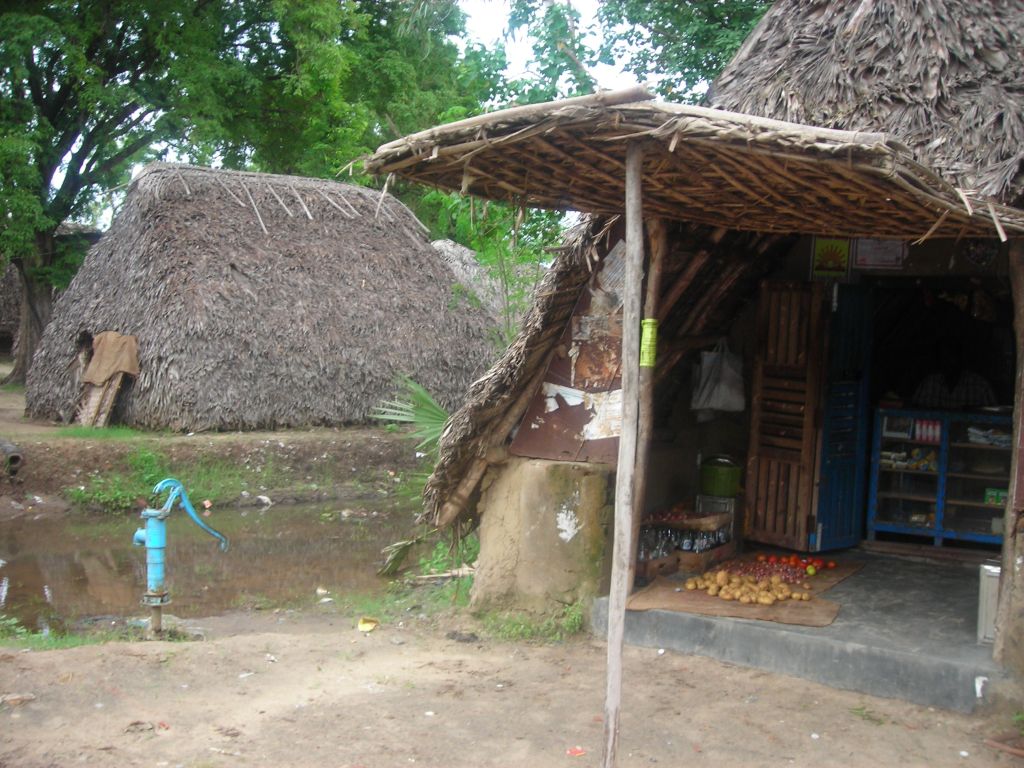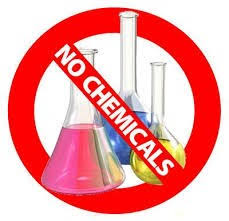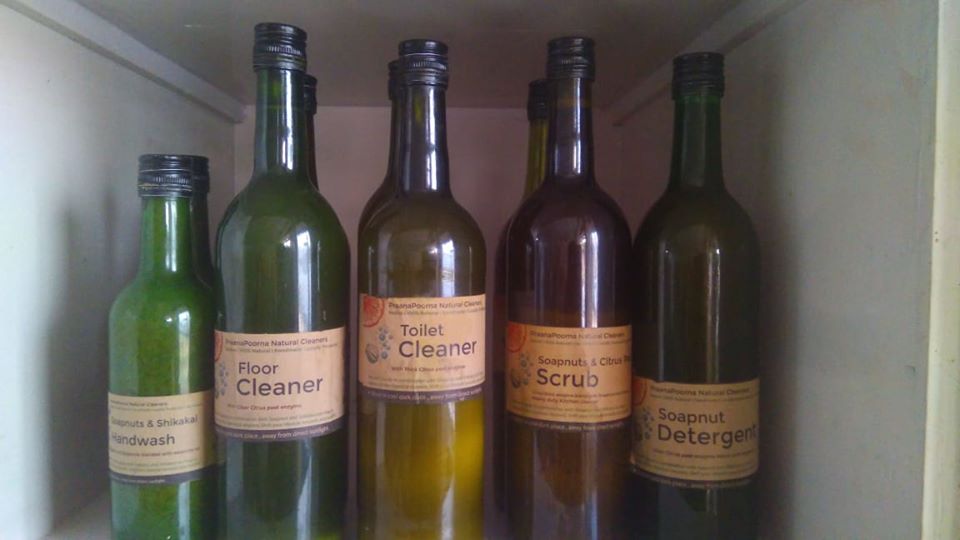Disclaimer: The priority right now is to tackle SARS-COV2 according to WHO guidelines. This article is to highlight why bioenzyme-based cleaners are a better choice to keep pathogenic microbes at bay and keeping our water sources free from chemicals.

As I write this piece, most countries are under a lock-down. The SARS- COV 2 Virus (Covid-19) has changed our lives in recent times like nothing before. Yes, there have been wars, natural disasters, but this occurrence is a truly humbling one, where a small virus has brought human kind to a grinding halt. The advisory to halt the spread of the virus includes thorough hand-washing with soap and water.

But think about it -does everyone have access to safe water? According to World Bank estimates over 21 percent of communicable diseases in India are linked to unsafe water and the lack of hygiene practices. Further, more than 500 children under the age of five die each day from diarrhoea in India alone. I suspect that very soon we will not have enough safe water to wash our hands!

We have let our lakes and rivers die by letting our domestic and industrial waste-water into precious water bodies. As ordinary citizens can we do something to stop this? The answer is a resounding ‘Yes’! One change that we can make is the stop of chemical cleaners and detergents in our daily life. And the article speaks about this.
In nature there is a happy balance of good microbes and pathogens. The good microbes overrun pathogens in number. There are nitrogen-fixing bacteria in the roots of plants that play a major role in nature, the lactobacilli convert milk to curd, your gut bacteria help in digestion of food, keeps you healthy and there are microbes that also maintain reproductive health. Do you know that nearly 10,000 different species of bacteria and other microbes occupy the human body? But in our effort to sanitize our environment with chemical cleaners, we are also effectively killing the good microbes around us. And this imbalance gives power to pathogens to overtake good microbes. Additionally, the chemical cleaners that we send off as grey-water in our environments is fast polluting our water bodies as well. Have you ever thought about what happens to soapy water after it is flushed down the drain? Did you know it can pose severe health hazards to the lives of fishes and other aquatic organisms and pollute water bodies?

A study by the Indian Institute of Science, on the lakes in Bangalore showed that the inflow of sewage brought in a host of natural as well as synthetic organic compounds. The frothing in the lakes happens due to the surfactants in the detergents that mainly consist of phosphates. Common detergents contain branch-chained alkyl sulphonates that are non-biodegradable and results in persistent foam. Other agents such as bleach are very corrosive, and can affect the body. Moreover, if mixed with other cleaning products, it’ll react with it and release dangerous gases like ammonia and chlorine. Glass-cleaners have isopropyl alcohol, monoethanolamine, and butyl alcohol. You could do your research and see how safe they are. Indeed many of these chemicals are carcinogenic.
So, are there sustainable alternatives that do not kill the good bacteria and also clean the environment you live in? The answer is a resounding yes – and that is Bioenzyme based cleaners. What is Bioenzyme? Well, the clue is in the name. ‘Bio’ means living and ‘enzymes’ are chemical substances that hasten the breakdown of complex molecules into simpler one. Quite like the enzymes that our stomachs produce to digest food. Bio-enzymes contain both good bacteria and a lot of enzymes that can clean very well, very quickly and is completely odour free. So, how does the process work? The following protocol is obtained from the book ‘The Waste Issue’ (2018), authored by Sangeeta Venkatesh (author of this piece), Padma Shastry and Nivedita Rathaur.
Essentially fruit peels (usually citrus) are placed in air-tight containers with jaggery and water, where the good bacteria begin to act and break down all the food matter using enzymes. The purpose of jaggery is to provide “simple” carbon source or energy for the microorganisms to first feed and grow. The air tight container is left for three months. If you are a beginner, you could start with the proportions given below.
Materials Required:
1) 300 grams jaggery
2) 900 grams of vegetable/ fruit remains (citrus will give a pleasant odour)
3) 3 litres of water
4) 5 litre capacity plastic container
During the fermentation process, give this a mix ever 2-3 days. After three months, all the food matter is completely digested by a process called fermentation. What is left inside the container is a lot enzyme and a lot of good bacteria. This can be diluted and used to clean the toughest stains, odours, utensil, and clothes while destroying harmful bacteria. If you have used citrus, then the enzyme has a pleasant citrus odour. And it is completely environment-friendly! Amazing isn’t it? If you want lather, you can add extract of soapnut (Sapindus). Release of Bioenzyme into the environment after use is perfectly safe and, in many cases, also helps rejuvenate polluted bodies.
Says Lakshmi Sankaran of Praanapoorna Collective, which makes a host of natural cleaners, “Ever since man has introduced chemicals into his life, his action has affected the ecosystem. The web of life is so interconnected, that man’s action directly affects the ecosystem – the soil, the water around us.” She further explains that by using soapnut, shikakai, woodash in combination with Bio-Enzyme, it can help us replace all the chemical cleaners used in our living spaces on daily basis. In addition these cleaners are not ‘dead’ and instead energise and rejuvenate living spaces.
The bacteria in the bioenzyme cocktail clean up waste and soiled items by producing enzymes specifically designed to break down molecules (wastes/soils) into smaller pieces. These smaller pieces become ‘food’ for the bacteria.
However, it is important to know that the enzymes in these cleaners are not living things and cannot grow or reproduce on their own, like the bacterial micro-organisms do. The end product usually has alcohol, acetic acid or both. Both compounds are known for their cleaning and anti-microbial properties.
By the use of Bioenzymes, there occurs a natural competition for food and resources, where the non-pathogenic “good” bacteria helps to displace pathogenic (disease-causing) bacteria, which benefits human health. Nature’s way of demonstrating that ‘good’ wins over ‘bad’, – if only we humans will allow it to happen.

‘Soil and Soul’, another Bangalore based organisation founded by Preeti Rao also makes a host of home care products. Do check out her article on chemical-free living.

Apart from its use as cleaners, Bioenzymes has a plethora of other uses as listed below.
- Use as room fresheners (1 part bioenzyme : 3 parts water, leave in an open container)
- Removes pesticide residue from vegetables and fruits
- Safe to use when you have pets at home
- Enriches soil quality (15 ml in 1 litre water)
- Also a pesticide for plants (can spray a diluted solution)
- Acts on oil and grime on vessels
- Clears blocked drains when used directly without dilution
- Removes limescale on taps
The highlight is that the cleaner is made from organic fruit or vegetable waste and can be made at home and using your fruit or vegetable or even flower waste. For those who cannot attempt it, you can source from organisations that I have mentioned above – at very competitive prices. The bottom line is that the use of Bioenzyme, maintains a healthy population of ‘good microbes’, thereby suppressing pathogenic bacteria and viruses. Hopefully, we will soon overcome Covid-19, but there will be other pathogens that will invade the space where good microbes should. A choice will have to be made now- What will be your choice of cleaner?
Write to me at sangeetavenkatesh7@gmail.com for your copy of ‘The Waste Issue’.

The more urgent need today is on account of the SARS-COV2, and specifically w.r.t sanitizing ( hand, contaminated surfaces….) with a concoction that has alcohol content ( ethyl alcohol in hand sanitizers) of more than 60% concentration. Bioenzyme is not alcohol, but merely acetic acid. Where is the research to show it can destroy/ disinfect against virus, like alcohol does?
LikeLike
https://www.ncbi.nlm.nih.gov/pubmed/18459307
This study shows that only citric acid and commercially available iodine/acid disinfectant were found to be effective at inactivating LPAIV (avian influenza virus) on both porous and nonporous surfaces. Detergents were of no use. The aim of the article is to promote use of Bioenzymes that promote population of good bacteria and suppress the flare up of pathogens. And not for Covid-19 inactivation. However, there are studies when horseradish peroxidase that mimics Bioenzyme has inactivated viruses. And Bioenzyme is a cocktail of many such enzymes.
LikeLiked by 1 person
There are also studies that acetic acid causes irreversible denaturation of proteins much like alcohol.
LikeLike
Reblogged this on sojourn-with-san.
LikeLike
Informative article. Can the bioenzymes be used to wash clothes and would it be effective.
LikeLike
Thank you Tara. Yes, it can be used to wash clothes by using 50% soapnut (reetha) liquid and 50% bioenzyme. Or you can put few soapnut pods in a muslin cloth ( if you use a washing machine, and also add the bioenzyme liquid. It is effective.
LikeLike
This is a very educative post. Thank you. My queries …
900 gms of fruit – vegetable waste is a lot and will not be collected in a day. So how do I stock pile without having them rot in a humid, salty atmosphere? Alternately can I simply use 900 gms of any fruit / vegetable to make this?
What is the shelf life for this product?
LikeLike
900 gms is not much at all Swati. You can collect it over 3-4 days easily if not earlier. I would suggest, you collect citrus first (oranges and lemons). If you have a juice vendor closeby who will be throwing it off in anycase, you could source extra peels. That said you can use absolutely any peel or flowers. If you need to store, please put in a container in the fridge till you get the requisite amount.
LikeLiked by 1 person
It takes 3 months for the Bioenzyme to be fermented. After that shelf-life is infinite.
LikeLiked by 2 people
Does one have to use water to wash the enzyme off from hands, in which case the water problem remains as in the case of soap and water.
LikeLike
This article is more about not letting chemicals and detergents as grey water into our water bodies as well as ground water. So the hand-washing protocol remains the same.
LikeLike
Such an informative article! Only recently did I start reading more about the chemicals in our cleaners, so bumped into this post at a good time. Thanks for the tops and method to make them at home, will definitely try out 🙂
LikeLiked by 1 person
Thank you Avantika. Please do try this simple yet effective way of cleaning. Do share the article with friends and family. Awareness on this is very crucial if we need to preserve our world!
LikeLike
Hi Ma’am thank a lot very informative Information..can I use bio enzyme for my balcony plant growth Will be grateful if u let me know how to use and in what quantity in diluted form within how many days of interval.
LikeLike
As I have written ” It Enriches soil quality (15 ml in 1 litre water).” Yes you can use it for plants. You can use it once in 10 days.
LikeLike
My understanding is citrus peels are a no no when making compost…so how is it ok to add citrus bioenzymethis freq to soil…have you checked the pH changes in soil.or is there any s identification data behind this recommendation? I am particularly interested about adding to soil . Not questioning about cleansingbeyv
LikeLike
You have to dilute it and this feeds the soil with more good bacteria. Just like an innoculation. The pH will not change.
LikeLike
very good information very usefull
LikeLiked by 1 person
Thank you!
LikeLike